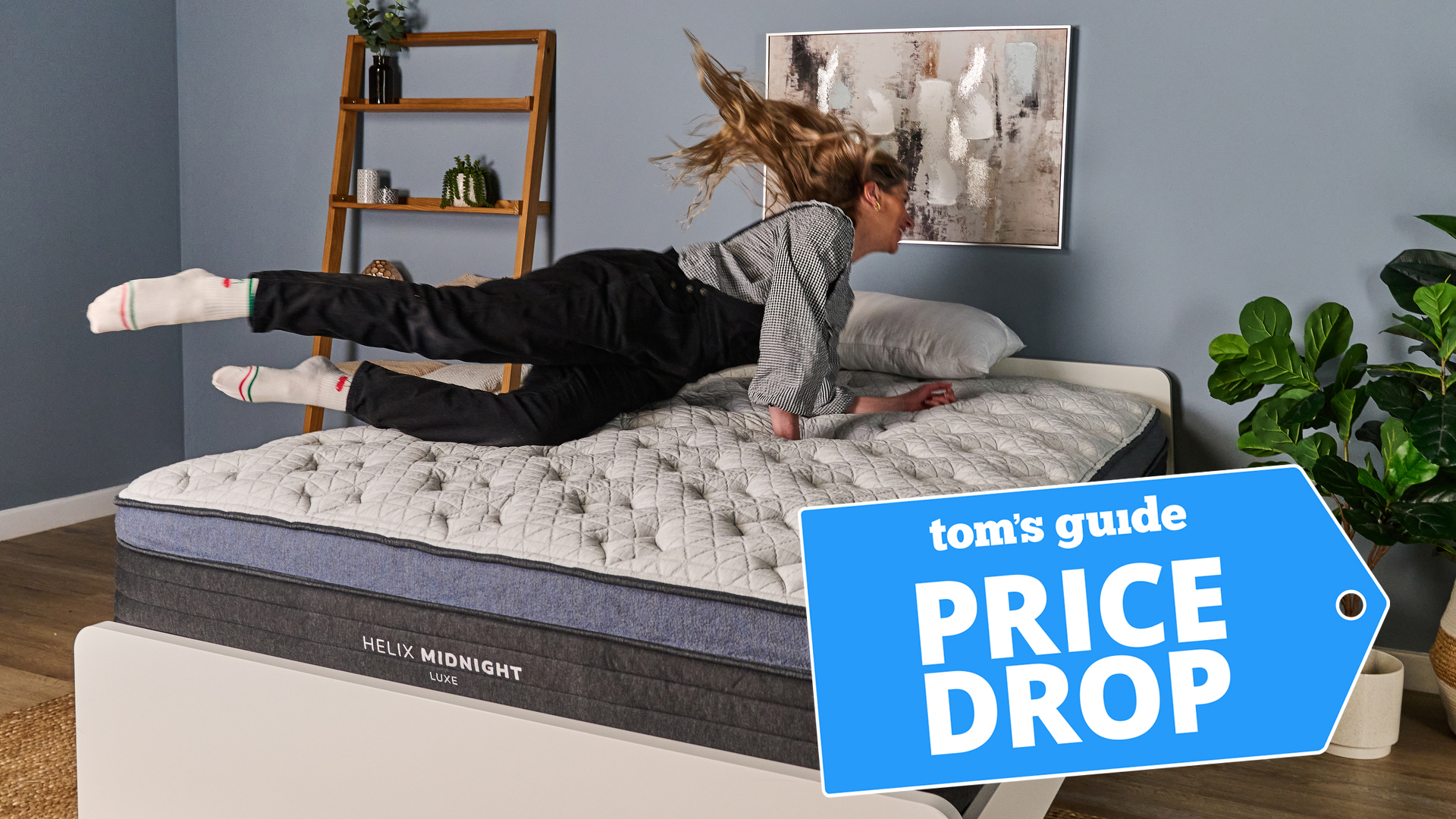
Take a quick scan of any gym floor and, without doubt, you’ll find most people in there training at least one of their arm muscles. But why does arm development take center stage when it comes to gym training?
For one, well-sculpted biceps and well-defined triceps have long been symbols of strength and aesthetic appeal — for all genders. Sure, in recent years the focus has shifted away from solely pursuing a specific aesthetic ideal, and, instead, people are realizing the importance of personal well-being, self-confidence, and overall health. This is great societal progress. But there’ll always be people wanting to improve their aesthetics to feel better about themselves, and there’s nothing wrong with that.
So, if arm development is something important to you and you're looking to build bigger arms, one thing that is often overlooked is the tricep — the muscles on the back of the upper arm.
While many gym-goers focus on repetitive bicep curls to increase size, they often miss that growing bigger arm muscle overall is a game of two halves. Both the biceps and triceps are primary muscle groups in the arms, responsible for size and definition. That’s because tricep muscles make up a significant portion of the upper arm. While the biceps are often the more visually prominent muscles, neglecting the triceps can lead to an imbalance and hinder overall arm development. So, if you’re wanting to up your arm game, focus on the tricep just as much as the bicep.
Among the various exercises that target the arms, the tricep pull-down stands out as a fundamental and effective movement for developing the triceps. But what exactly is a tricep pull-down?
What is a tricep pull-down?
The tricep pull-down is a popular exercise that targets the triceps, the muscles on the back of the upper arm. It involves using a cable machine or resistance bands to perform a pulling motion, engaging the triceps, and helping to build strength and definition in this area.
According to Palomie Patel, fitness trainer and owner at F45, Camden, in London, a tricep pull-down is “one of the best exercises” to work your tricep muscles.
Get instant access to breaking news, the hottest reviews, great deals and helpful tips.
“The triceps are key in activities like throwing a ball or moving a hoover back and forth,” Patel says. “They are an important muscle in our overall upper body strength, and weak triceps can lead to issues with movements in our shoulders.”
How to do a tricep pull-down
First off, let’s delve into what constitutes a tricep pull-down and how to perform one with perfect form. For this, I’ve enlisted the know-how of Patel who will guide us through the exercise, step-by-step.

- Start off by approaching a cable machine and attaching the rope attachment.
- “Select a light weight to start with,” Patel says. “Position the rope roughly at chest height, and start the move with your elbows at a 90-degree angle and have a slight bend in your knees”.
- From there, she recommends inhaling as you lower your arms, slowly, until they are nearly locked out. Ensure to keep your elbows tucked into the body and your core embraced.
- “Then, on the exhale, return to the start position slowly, making sure you don't let the weights crash.”
- Patel suggests aiming for around 10-12 reps of four sets, but you can mix things up easily by incorporating different cable attachments, grip distances and training systems, such as drop sets (of which I’ll go into more detail later).
- “Tricep pull-downs are suitable for individuals of various fitness levels and are essential for anyone who wants to improve their upper body strength, those with mobility issues in their shoulders, and of course for those looking for toned arms,” she adds.
- “Beginners can start with a lower weight and a lower rep range (around 6-8 reps) and then slowly build up to the full range.”
If you don't have access to a cable machine, you can also perform the exercise with a resistance band by attaching it securely to something above your head, or you can work the triceps in other exercises such as tricep dips, skull crushers or tricep push-ups.
Check out the best resistance bands and the best adjustable dumbbells for working out at home.
I did tricep pull-downs every day for a week — here's what happened
Since tricep pull-downs are said to offer several benefits, including increased arm strength, and improved muscle tone, I decided to embark on a week-long experiment to see how performing triceps pull-downs every day would impact my training and physique. Here’s how I got on.
Day 1
On the first day of the experiment, I focused on establishing proper form and technique. I chose a weight that allowed me to complete four sets of 12 repetitions, relatively easily, with good form. I felt a moderate burn in my triceps during the exercise but didn’t experience any excessive soreness afterwards. I thought it was important to treat this as a king of “warm up” so not to go too hard too soon.
Day 2
As I progressed to the second day, I decided to vary the grip width of my pull-down by switching out the rope attachment for a bar. I did this to target different areas of my triceps. For example, by using a closer grip, I felt a more intense contraction in the inner portion of the triceps. The workout felt challenging but manageable.
Day 3
On the third day, I incorporated drop sets into my tricep pull-down routine to keep things fresh. After completing a set of 12 repetitions with a challenging weight, I immediately decreased the weight and performed another set until failure. I did this to intensify the burn in my triceps and push my muscles to fatigue. It was certainly more challenging the workouts on Day 1 and Day 2 but no significant change in arm definition just yet, but did start to feel the DOMS from three consecutive days of working the same muscle group.
Day 4
On the fourth day I decided to experiment with a single-arm tricep pull-down to add further variety to my tricep-focused routine. Since the exercise is a unilateral movement, helping to isolate each tricep individually and ensuring balanced development, I found it particularly effective in engaging the muscle fibres while increasing the mind-muscle connection. This day is when I started to see a little more definition in the arms but they did feel a little fatigued.
Day 5
By the fifth day, I noticed a slight increase in strength and endurance in my triceps. I was able to lift heavier weights while maintaining proper form throughout the exercise. The intensity of the tricep pull-downs had become more comfortable, and I saw a satisfyingly larger “pump” in my arms.
Day 6
By this point, I’m getting a little bored of training my tricep muscles but in the name of science I knew I had to continue. To help me deal with the repetition, I decided to make my workout a little more challenging by incorporating supersets. I combined tricep pull-downs with bicep curls, performing one exercise immediately after the other. This superset workout provided a great burn in both the triceps and biceps, resulting in an even greater pump in my upper arms than the day before. Not sure where the energy for this came from but it’s safe to say I was well and truly beat afterwards.
Day 7
As the week came to a close, I spent my final day of tricep training keeping things pretty chill and with a similar approach as Day 1, treating the workout as more of a post-gym cooldown. Again, I performed four sets of 12 repetitions with a relatively light weight and kept it nice and easy while making sure to retain good form. Not being a creature of comfort, I was happy for this to be my last tricep workout for a while.
After completing a week of tricep pull-downs every day, I can confidently say it was a worthwhile experience. The exercise not only provided a targeted workout for my triceps but also offered a glimpse into the potential benefits of consistent training.
Throughout the week, there were plenty of positives perceived. My triceps felt stronger and more defined, for one and I noticed an improvement in the overall aesthetics of my arms aesthetics. The exercise helped me develop better mind-muscle connection and control over the movement, allowing for better muscle engagement.
One aspect that surprised me was the adaptability of tricep pull-downs. I was quickly bored by the prospect of doing the exact same workout every day, so was nice that I could easily modify the exercise to keep it fresh and interesting. By incorporating variations such as different grips, drop sets, and unilateral movements, I also could target specific areas of my triceps and keep the workouts challenging and engaging.
My triceps felt stronger and more defined, for one and I noticed an improvement in the overall aesthetics of my arms aesthetics.
However, while I’d definitely incorporate more tricep pull-downs into my regular training routine, I don’t think performing the exercise every day is necessary or optimal for everyone. Perhaps more achievable would be to incorporate it two to three times a week so you can reap the rewards of strength, muscle development, and overall arm aesthetics without fatigue.
Recovery is crucial for muscle growth and preventing overuse injuries and, over time, the muscles may adapt and plateau if subjected to the same exercise routine every day without rest. I think the key here is to vary your exercises and target other muscle groups each day, allowing sufficient recovery time for optimal results.
It’s also important to listen to the body. If you feel tired and like you need some rest, don’t force the workout. Do as your body tells you. You’ll thank yourself for it later.
More from Tom's Guide
- I did triceps dips every day for a week — here’s what happened
- These are the 3 best dumbbell workouts for triceps
- Forget push-ups — this 10-minute arm workout sculpts your biceps, triceps and shoulders

Lee Bell is a freelance journalist and copywriter specialising in technology, health and fitness and how the latest innovations are shaking up the lifestyle space. From national newspapers to specialist-interest magazines and digital titles, Lee has written for some of the world’s most respected publications during his 12-plus years as a journalist.
